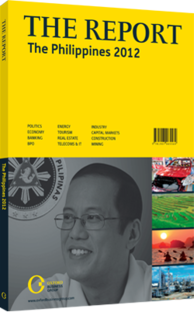Turning on the flow: A range of incentives are attracting investors to the sector
With the Mining Act of 2005 finally helping to bring stability to the sector and stronger incentives putting investors’ minds at ease, money has begun to flow into the sector in recent years. After a decade of limited foreign investment into mining, averaging $43.13m per annum from 1999 to 2009, according to statistics from Bangko Sentral ng Pilipinas, the central bank, 2010 produced a windfall of $277.5m. This represented roughly one-third of all total foreign direct investment (FDI) in the country’s annual total of $848m.
FDI ON THE RISE: This trend continued through the first half of 2011, with mining and quarrying FDI more than doubling from $24.58m through the first six months of 2010 to $53.93m the next year, according to data from the central bank. This 119.39% year-on-year increase was the largest of any category, behind only electricity, gas, steam and air conditioning supply at 193.94% and agriculture, forestry and fishing with 145.18%, while outpacing average growth of 25.61%. Total investment including local outlays increases this dramatically, with mining investments reaching $955.8m in 2010, up from $719.5m the previous year, as measured by the Mines and Geosciences Bureau (MGB).
Yet despite the positive growth shown recently, the potential for the sector is far from realised. The Chamber of Mines of the Philippines’ original estimate for 2011 investment in mining was $3bn. Over the course of the year this has proven overly optimistic and has since been revised to $1bn. The MGB is still predicting investments of $3.9bn in 2012, though this may be affected by possible changes to the regulatory environment being considered by the government.
SWEETENING THE POT: The Mining Act solidified a series of incentives for mining firms that are helping to drive investment. These include the ability to carry forward income tax losses for the first 10 years of operation against taxable income for the five years immediately following the year of such loss, accelerated depreciation of fixed assets, exemption from real property taxes on pollution control devices, investment guarantees, repatriation of capital, freedom of expropriation and requisition of properties, and remittance of earnings and interest on foreign loans.
Additional fiscal benefits are also granted under the Omnibus Investments Code to companies approved by the Board of Investments (BOI). These include a 100% income tax holiday of four to eight years, exemption from wharfage dues and related export tax, duty, import and fees, a tax credit on raw materials and supplies, additional deductions for labour expenses and major infrastructure works. Through the first three quarters of 2011, approved BOI mining and quarrying investments were the fourth-largest category, totalling P62.85bn ($1.4bn), up from P1.01bn ($22.9m) over the same period in 2010. The bulk of investment came in the form of the Silangan Mindanao Mining Company’s new copper project (with silver and gold by-products), in Surigao del Norte province. The P49bn ($1.1bn) operation is expected to have a milling capacity of 10.9m tonnes.
OTHER INCENTIVES: Companies engaged in a financial or technical assistance agreement are also entitled to a five-year period for recovery of capital investments during which national taxes are waived. Upon the expiration of the recovery period, net mining revenues are divided equally between the government and the company. The agreement also allows firms to apply for “eco-zone” status, which grants further exemptions from specific national and local taxes for corporations undertaking downstream mineral processing activities.
The project with the single largest investment potential is Tampakan’s copper and gold venture, which will require total outlay of around $5.9bn. OceanaGold’s Didipio copper and gold mine will also require significant investments ahead of its 2013 opening date. Only $12m of the total project’s estimated $185m in total capital costs were spent as of May 2011. Interest has also been shown by a number of other high-profile international mining companies including the fifth-largest gold producer in the world, Harmony Gold Mining Company of South Africa, as well China’s Jinchuan Group.
You have reached the limit of premium articles you can view for free.
Choose from the options below to purchase print or digital editions of our Reports. You can also purchase a website subscription giving you unlimited access to all of our Reports online for 12 months.
If you have already purchased this Report or have a website subscription, please login to continue.

